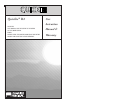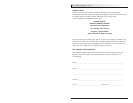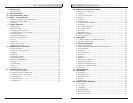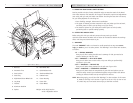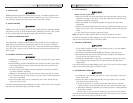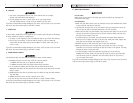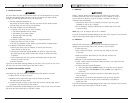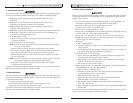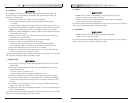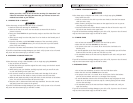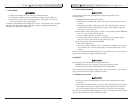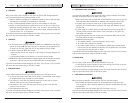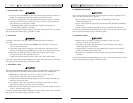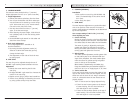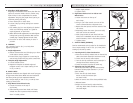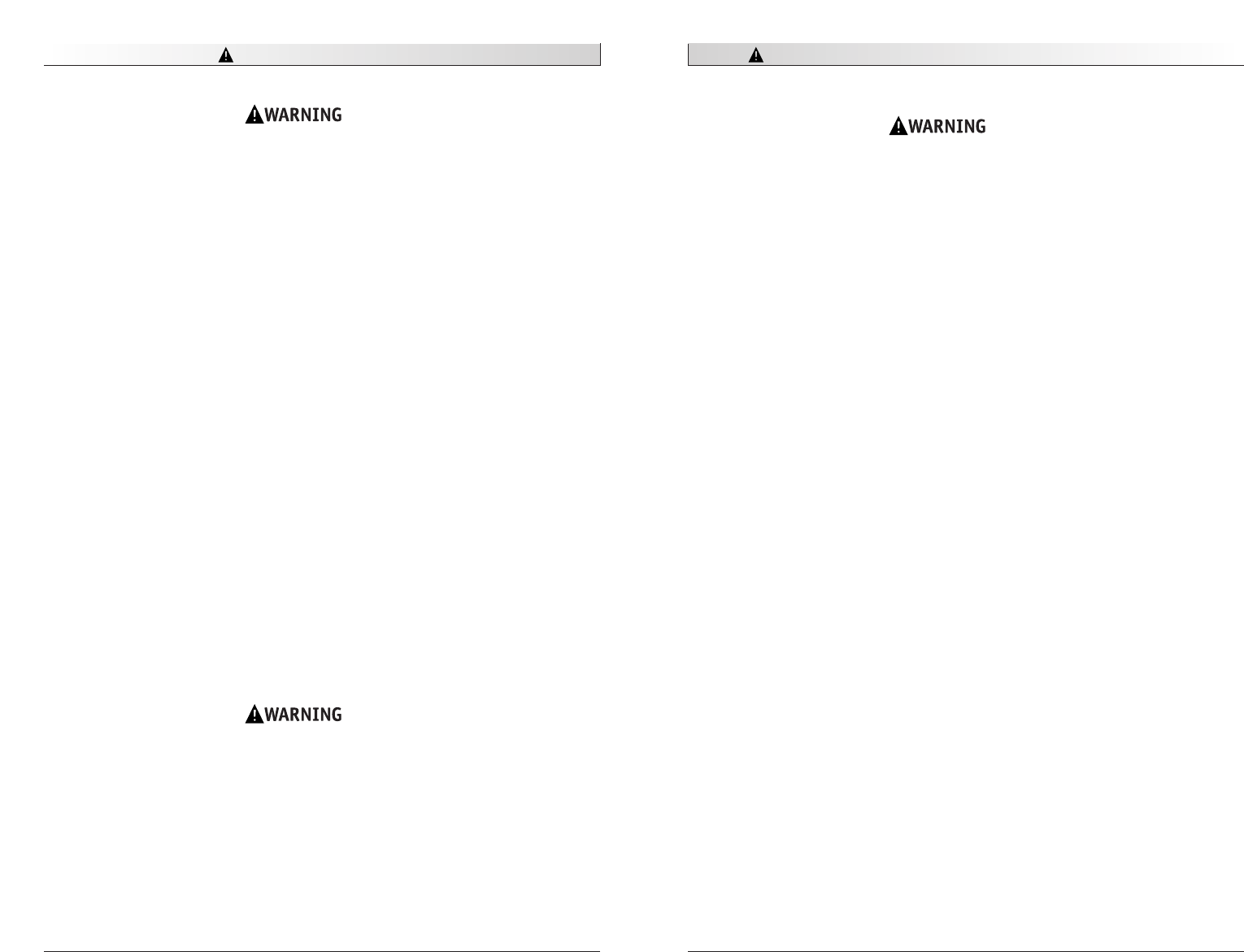
930398 Rev. B
VI. Warnings: Falls & Tip-Overs
15
G. RAMPS, SLOPES & SIDEHILLS
Riding on a slope, which includes a ramp or sidehill, will change the center of balance
of your chair. Your chair is less stable when it is at an angle. Anti-tip tubes may not
prevent a fall or tip-over.
1. Do not use your chair on a slope steeper than 10%. (A 10% slope means: one
foot/meter in elevation for every ten feet/meters of slope length.)
2. Always go as straight up and as straight down as you can.
(Do not “cut the corner” on a slope or ramp.)
3. Do not turn or change direction on a slope.
4. Always stay in the CENTER of the ramp. Make sure ramp is wide enough that you
are not at risk that a wheel may fall over the edge.
5. Do not stop on a steep slope. If you stop, you may lose control of your chair.
6. NEVER use rear wheel locks to try to slow or stop your chair. This is likely to
cause your chair to veer out of control.
7. Beware of:
a. Wet or slippery surfaces.
b. A change in grade on a slope (or a lip, bump or depression). These may cause
a fall or tip-over.
c. A drop-off at the bottom of a slope. A drop-off as small as 3/4" (19 mm) can
stop a front caster and cause the chair to tip forward.
8. To reduce the risk of a fall or tip-over:
a. Lean or press your body UPHILL. This will help adjust for the change in the
center of balance caused by the slope or sidehill.
b. Keep pressure on the handrims to control your speed on a downward slope.
If you go too fast you may lose control.
c. Ask for help any time you are in doubt.
9. Ramps at home & work - For your safety, ramps at home and work must meet all
legal requirements for your area. We recommend:
a. Width. At least 4' (1.3 meters) wide.
b. Guardrails. To reduce the risk of a fall, sides of ramp must have guardrails
(or raised borders at least 3" (75 mm) high).
c. Slope. Not more than a 10% grade.
d. Surface. Flat and even, with a thin carpet or other non-skid material.
(Make sure there is no lip, bump or depression.)
e. Bracing. Ramp must be STURDY. You may need bracing so ramp does not
“bow” when you ride on it.
f. Avoid A Drop-Off. You may need a section at the top or bottom to smooth out
the transition.
If you fail to heed these warnings damage to your chair, a fall, tip-over or loss of control
may occur and cause severe injury to the rider or others.
VI. Warnings: Falls & Tip-Overs
930398 Rev. B
14
E. REACHING OR LEANING
If you reach or lean it will affect the center of balance of your chair. This may cause you
to fall or tip over. When in doubt, ask for help or use a device to extend your reach.
1. NEVER reach or lean if you must shift your weight sideways or rise up
off the seat.
2. NEVER reach or lean if you must move forward in your seat to do so.
Always keep your buttocks in contact with the backrest.
3. NEVER reach with both hands (you may not be able to catch yourself
to prevent a fall if the chair tips).
4. NEVER reach or lean to the rear unless your chair has anti-tip tubes locked in place.
5. DO NOT reach or lean over the top of the seat back. This may damage one or
both backrest tubes and cause you to fall.
6. If You Must Reach Or Lean:
a. Do not lock the rear wheels. This creates a tip point and makes a fall
or tip-over more likely.
b. Do not put pressure on the footrests.
NOTE:– Leaning forward puts pressure on the footrests and may cause the chair
to tip if you lean too far.
c. Move your chair as close as you can to the object you wish to reach.
d. Do not try to pick up an object from the floor by reaching down between your
knees. You are less likely to tip if you reach to the side of your chair.
e. Rotate the front casters until they are as far forward as possible. This makes
the chair more stable.
NOTE– To do this: Move your chair past the object you want to reach, then back
up alongside it. Backing up will rotate the casters forward.
f. Firmly grasp a rear wheel or an armrest with one hand. This will help
to prevent a fall if the chair tips.
If you fail to heed these warnings damage to your chair, a fall, tip-over or loss of control
may occur and cause severe injury to the rider or others.
F. MOVING BACKWARD
Use extra care when you move your chair backward. Your chair is most stable when you
propel yourself forward. You may lose control or tip over if one of the rear wheels hits
an object and stops rolling.
1. Propel your chair slowly and smoothly.
2. If your chair has anti-tip tubes, make sure to lock them in place.
3. Stop often and check to be sure your path is clear.
If you fail to heed these warnings damage to your chair, a fall, tip-over or loss of control
may occur and cause severe injury to the rider or others.



